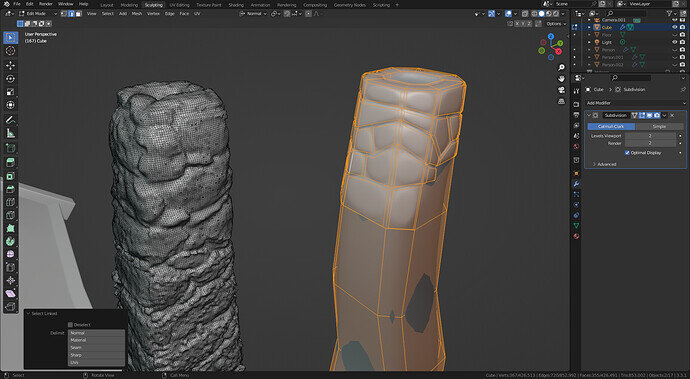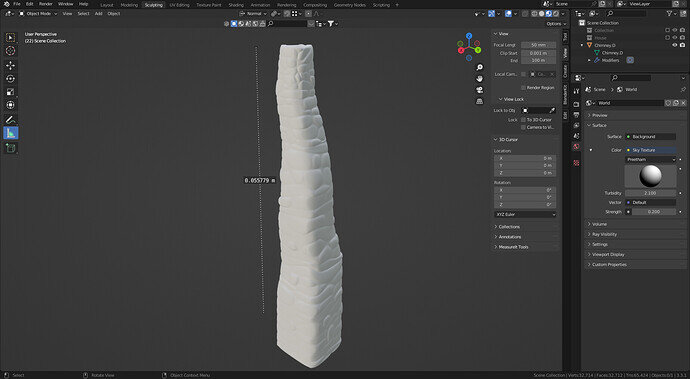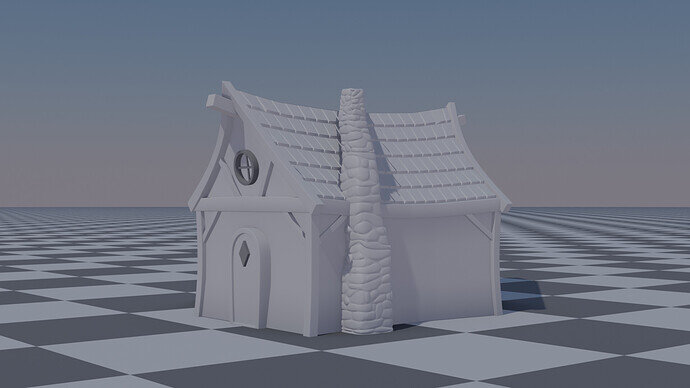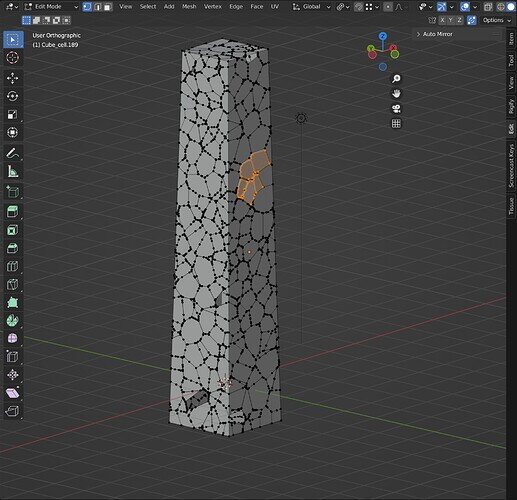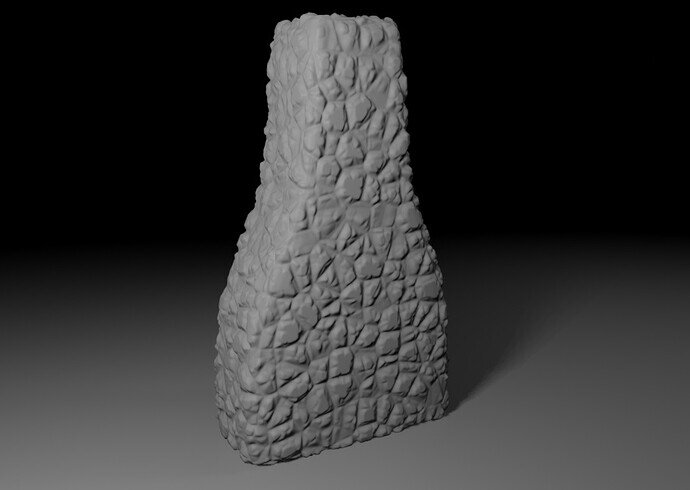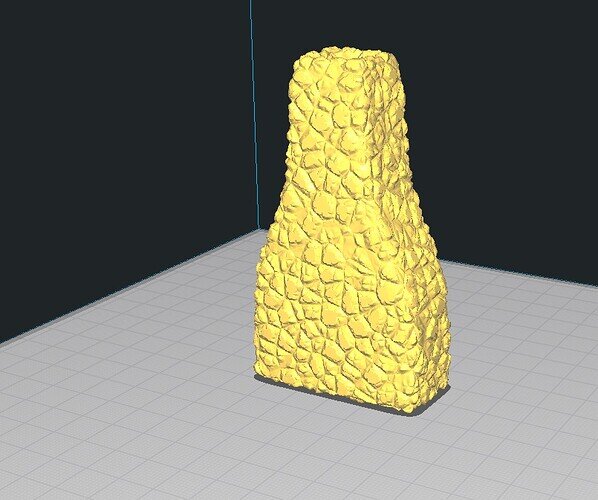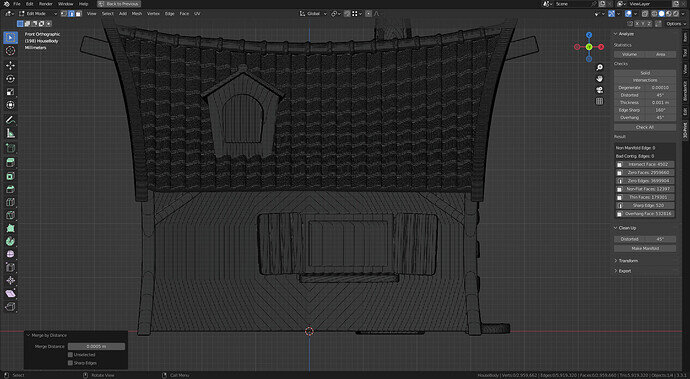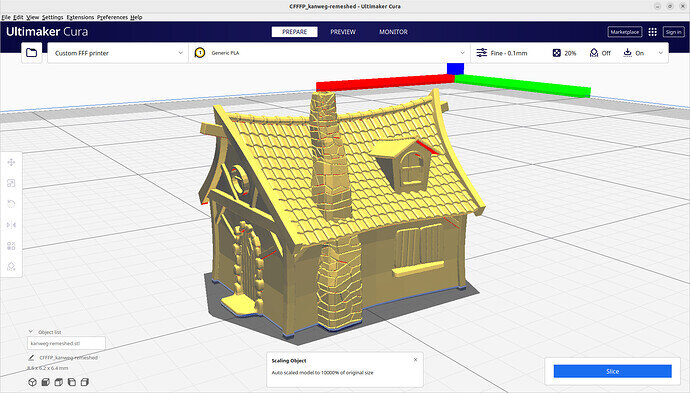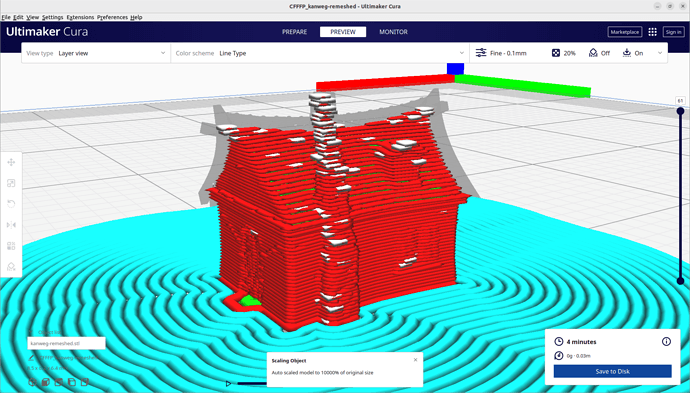I’ve printed some 3D models in the past. Using a printshop that uses a laser to meld plastic power into a 3D shape. Models are easy to design because this laser printing doesn’t need support beams for overhang. You can print parts of an object hanging in midair.
It makes 3D design easy to print!
But a 3D printer at home, using filament, is a different ballgame in designing printable 3D objects. This topic is my adventure in creating objects for print, using a filament printer.
I have some problems to master on this journey:
- I have a general idea of what to create. A floating island (like in the course) base on a floating wire table
- 3D printable objects with textures, means a lot of vertices. And a powerful PC. I need to be aware of this.
- How to solve “overhang” problems, by design, by print direction, or other means.
- I start small and see where problems arise.
The chimney design
This is my fourth attempt. Fighting time spent and efficiency.
I create a chimney beam with a lot of subdivisions and added a displacement modifier and a cobblestone image. The output was great but very rough. Using a sculpt brush I tried to clean up, which will take forever to do so. And also has a huge impact on project memory.
The fourth attempt is to cut out stones, with the knife tool, and extrude individual faces. Less work, cleaner mesh data.


